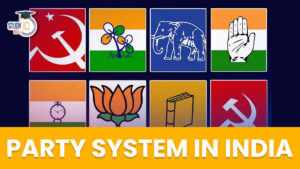Table of Contents
Context: The Central Government has recently brought crypto trading, safekeeping and related financial services under the ambit of the Prevention of Money Laundering Act.
About Cryptocurrency
- A cryptocurrency is a medium of exchange, such as the rupee or the US dollar, but is digital in format and uses encryption techniques to both control the creation of monetary units and to verify the exchange of money.
- Cryptocurrency uses blockchain technology. In a blockchain network, the ledger – collection of transaction records – is distributed.
- Cryptocurrencies were designed to be decentralized, which implies that they are not controlled and regulated by central authority.
- The independent nature of cryptocurrencies provided an alternative to traditional financial institutions, typically centralized and controlled by banks and NBFCs.
Need for Regulation
- To protect consumers from fraud and other financial crimes.
- Cryptocurrencies have been vulnerable to scams and other illicit activity.
- By establishing rules and standards for the use and trade of cryptocurrencies, regulators can help reduce the risk of such activities and protect consumers from financial harm.
- To foster greater stability and reliability in the cryptocurrency market.
- Cryptocurrencies are highly volatile, and their value can fluctuate significantly over short periods.
- By regulating cryptocurrencies, authorities can help reduce volatility and promote greater confidence in their use as a means of exchange.
- Consistent with broader financial and economic policies
- By setting rules for the use of cryptocurrencies, authorities can help ensure that they are not used for illicit purposes and that they are integrated into the broader financial system in a way that is beneficial to all stakeholders.
Government Recent Steps to Regulate Cryptocurrency in India
- India presiding over the G-20, has discussed with the member countries the need to develop a standard operating protocol for regulating crypto assets.
- In the Budget for 2022-23, a 30 per cent tax on income from transactions in such assets has been announced.
- To bring such assets under the tax net, a 1 percent TDS (tax deducted at source) on transactions in such asset classes above a certain threshold has been introduced.
- Gifts in crypto and digital assets were also taxed.
- The Reserve Bank of India has said that cryptocurrencies should be banned as they are akin to a Ponzi scheme (A Ponzi scheme is an investment fraud that pays existing investors with funds collected from new investors).
Highlight of Regulation of Crypto Trading under PMLA Act
- Exchange between virtual digital assets and fiat currencies, the exchange between one or more forms of virtual digital assets and the transfer of digital assets will be covered under money laundering laws.
- Virtual digital assets are as any code or number or token generated through cryptographic means with the promise or representation of having inherent value.
- Crypto exchanges and intermediaries dealing with virtual digital assets (VDA) will now be required to perform KYC of their clients and users of the platform.
- Indian crypto exchanges will have to report suspicious activity to the Financial Intelligence Unit India (FIU-IND).
- Entities dealing in VDA will be considered “reporting entity” under PMLA-banks, financial institutions, entities engaged in real estate and jewellery sectors as well as casinos are ‘reporting entities’ now.
- Under this law, every reporting entity is required to maintain a record of all transactions.

Significance
- It is a step by the government to tighten oversight of digital assets.
- It will give authorities greater authority in monitoring the transfer of these assets beyond the country’s borders.
- It is in line with the global trend of requiring digital-asset platforms to follow anti-money laundering standards similar to those followed by other regulated entities like banks or stock brokers.
Digital Rupee or Central Bank Digital Currency (CBDC)
- It is a digital form of currency notes issued by a central bank.
- It is an electronic form of money that can be used in contactless transactions.
- It can be defined as the legal tender issued by the Reserve Bank of India.


 Custodial Deaths in India, Types, Issues...
Custodial Deaths in India, Types, Issues...
 MPPSC FSO Recruitment Notification 2025 ...
MPPSC FSO Recruitment Notification 2025 ...
 Party System in India, Feature, Importan...
Party System in India, Feature, Importan...





















